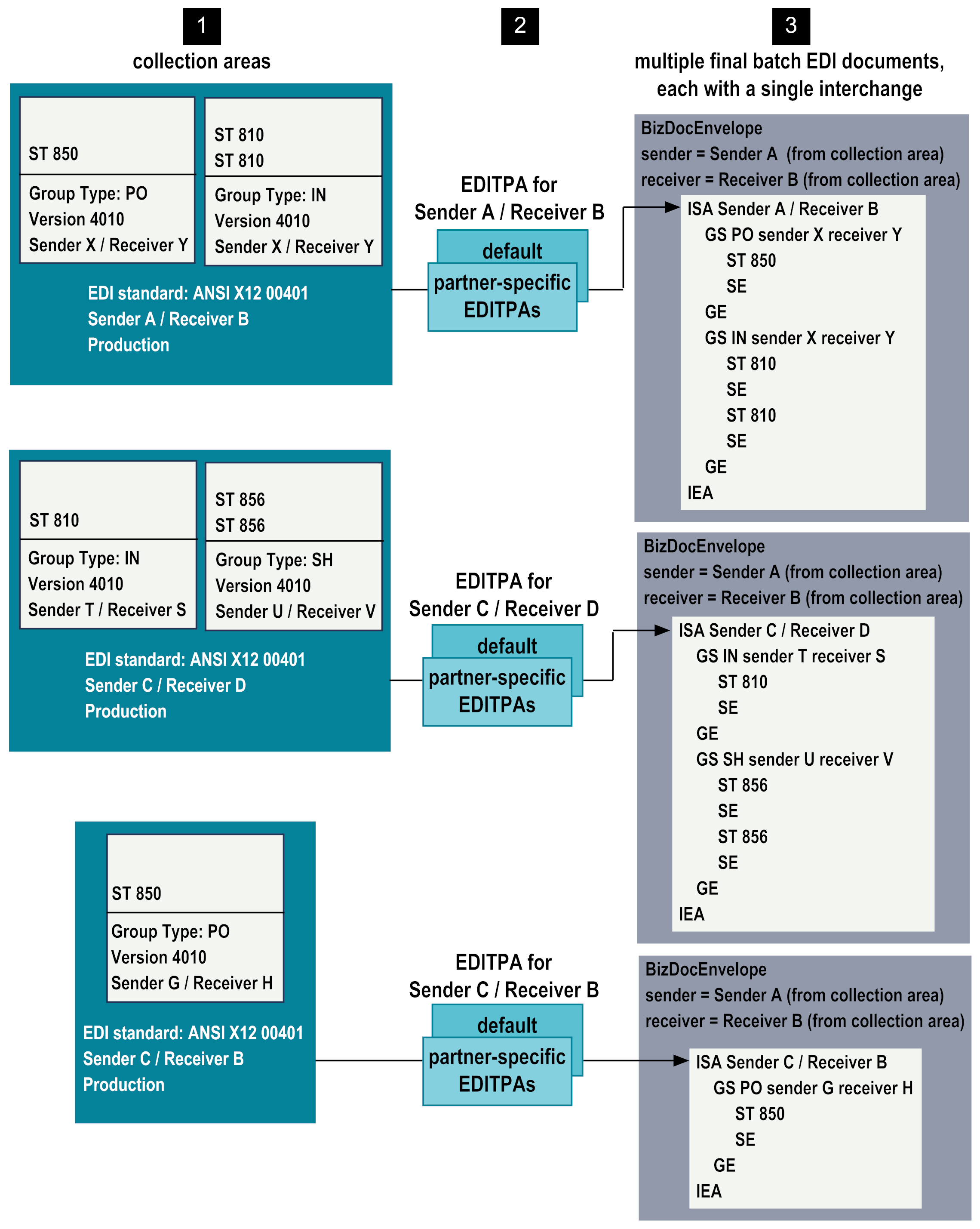

Step | Description |
1 | For each collection area, the batchProcess service combines the transactions in the collection area. Each collection becomes a single batch EDI document that contains a single interchange with each subcollection a group within the interchange. |
2 | As when oneBatchQueue is SINGLEOUTPUT, when oneBatchQueue is MULTIPLEOUTPUTS, the batchProcess service obtains the EDITPA information for the sender/receiver that are associated with the collection area. It uses information associated with the collection area, the subcollections, and the EDITPA to create the interchange and group headers. For more information, see step 2 in
Creating the Batch EDI Document when Using
SINGLEOUTPUT. |
3 | For each collection area, after recombining the transactions in the collection area, the batchProcess service creates a BizDocEnvelope for the final batch EDI document. The batchProcess service sets the sender and receiver for the BizDocEnvelope to the sender/receiver associated with the collection area. Then it sends the BizDocEnvelope to Trading Networks processing rules for routing. Note: If you use Sender or Receiver criteria in the processing rule to route the final batch EDI document, identify the final batch EDI document using the sender/receiver of the BizDocEnvelope. |